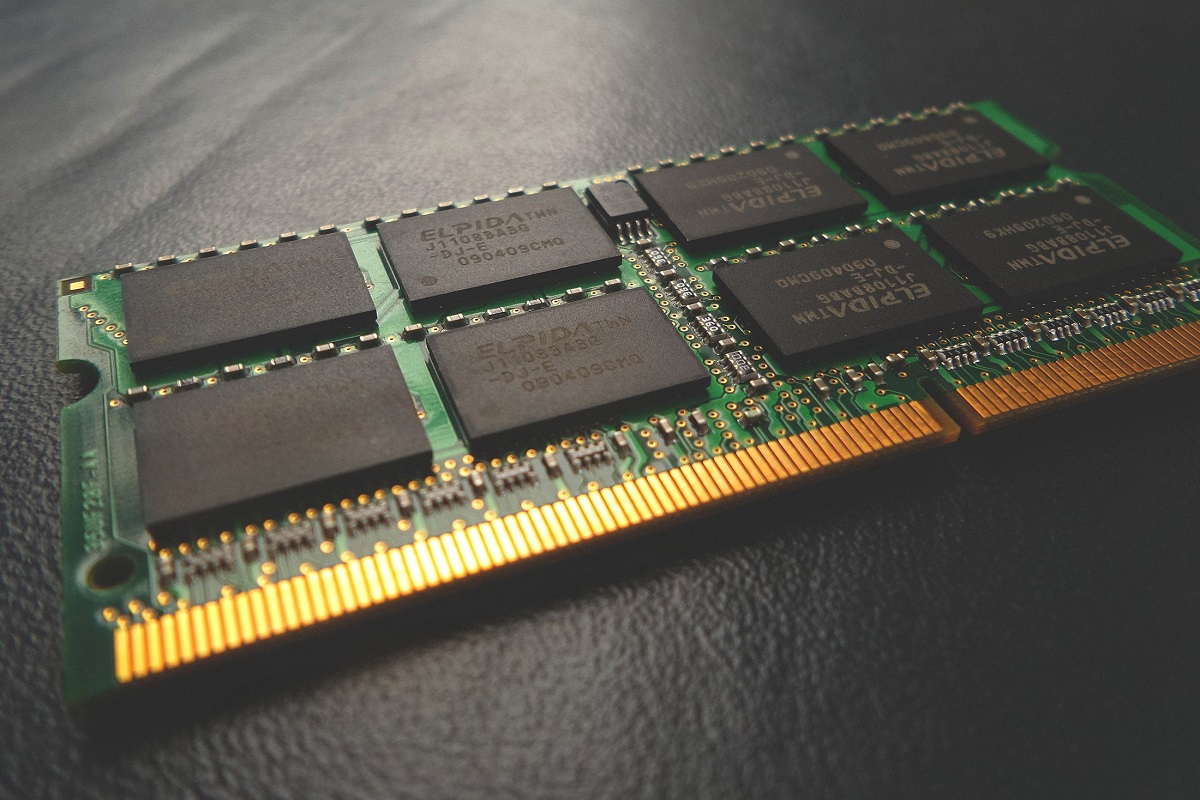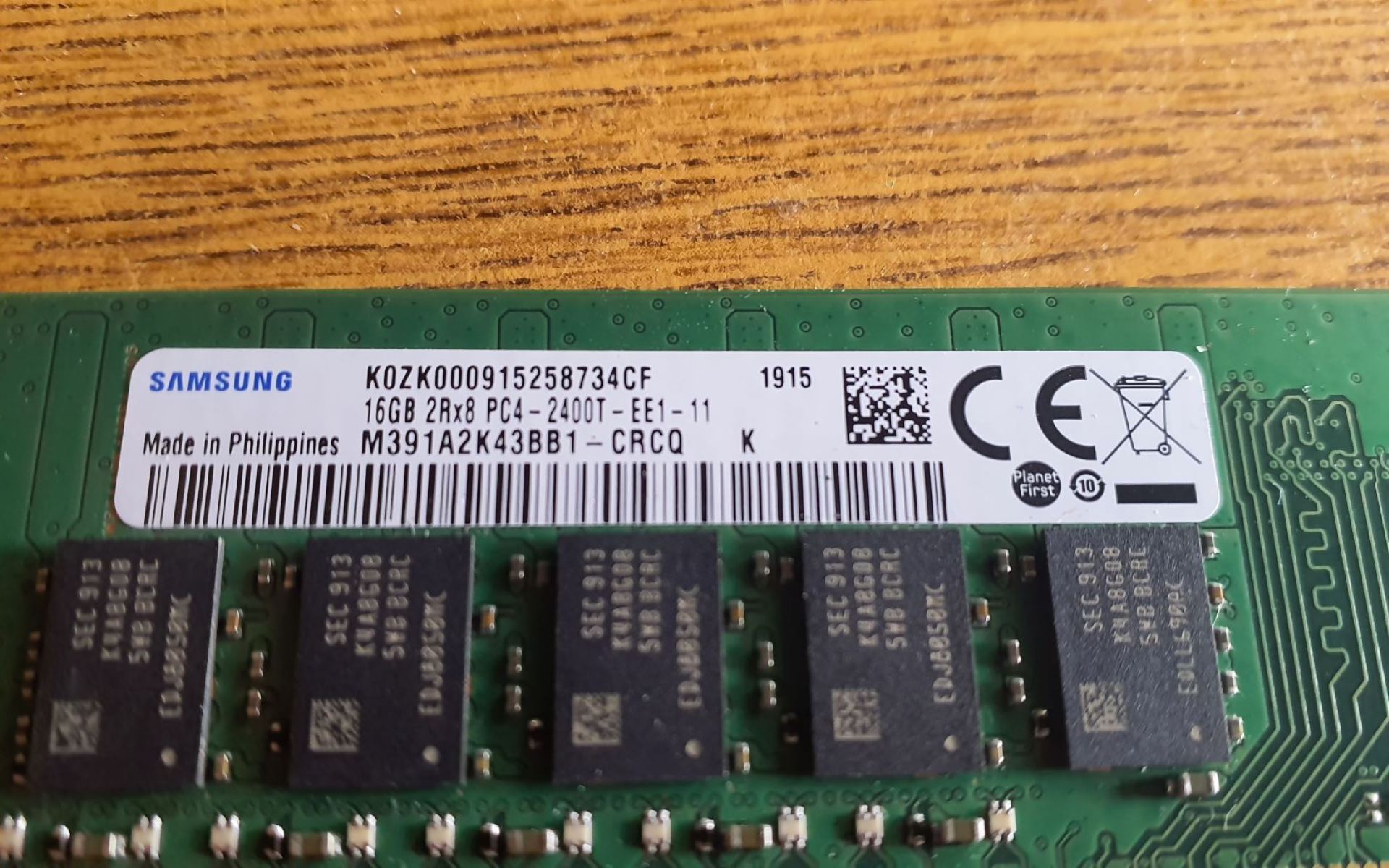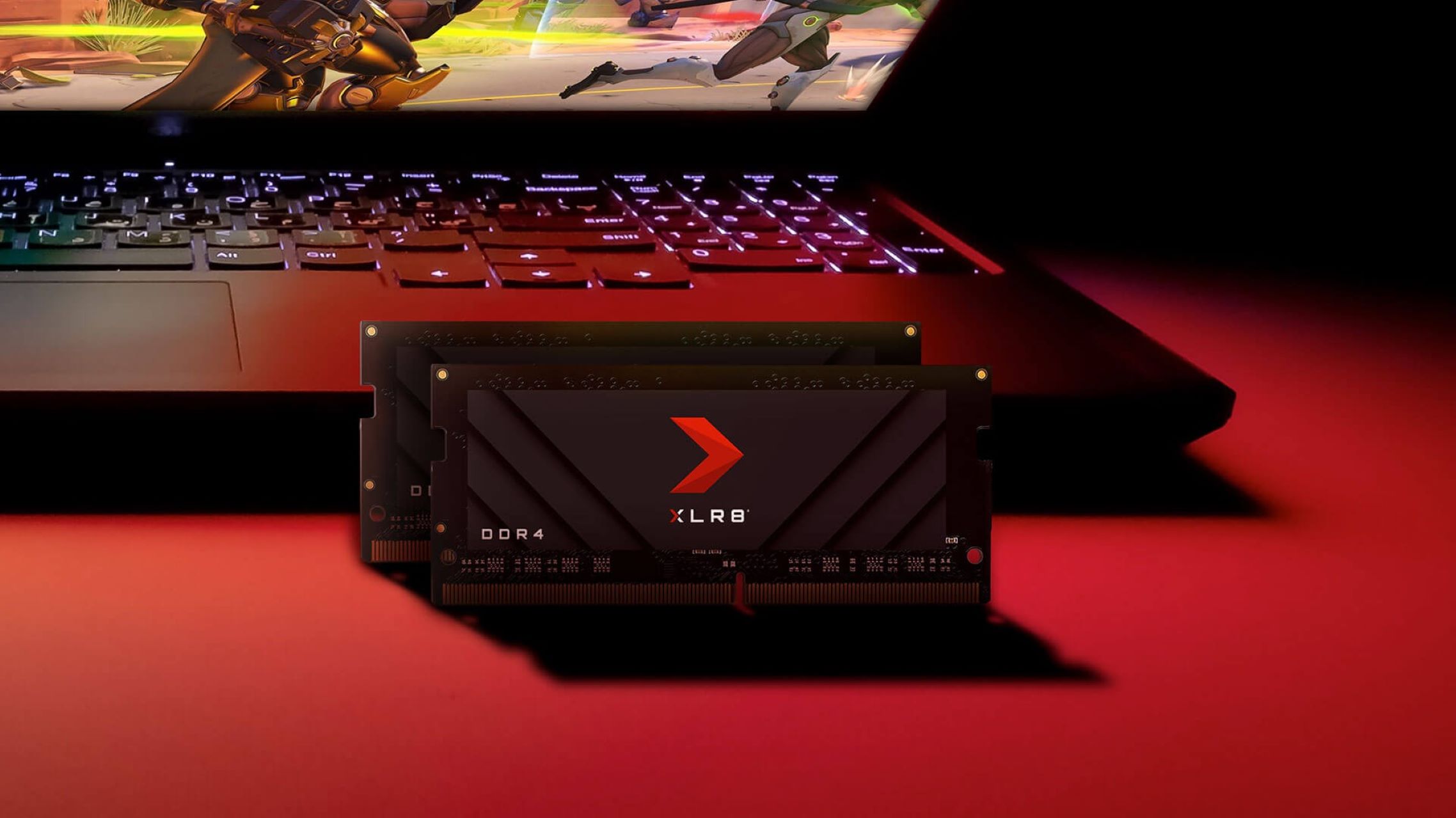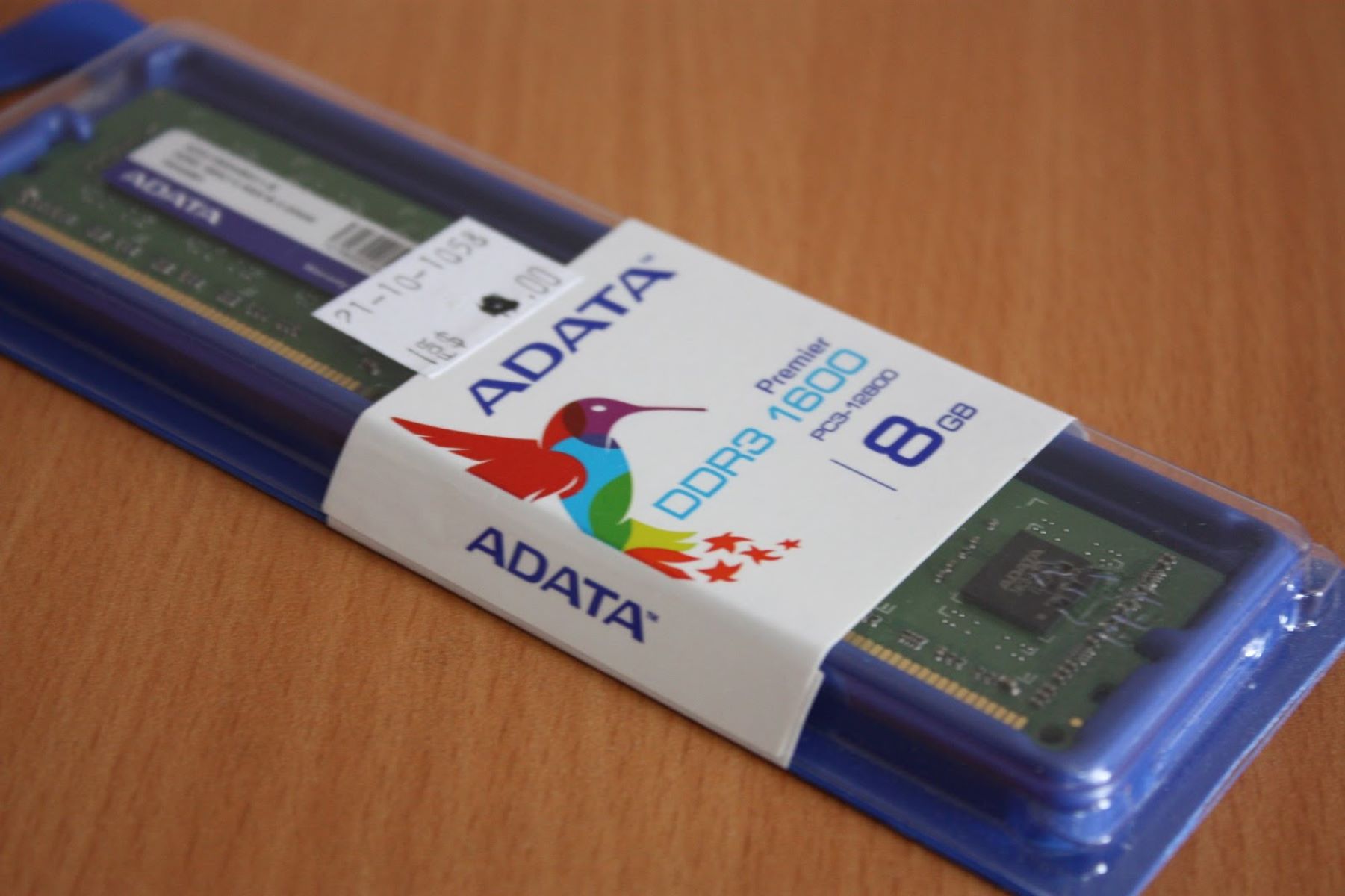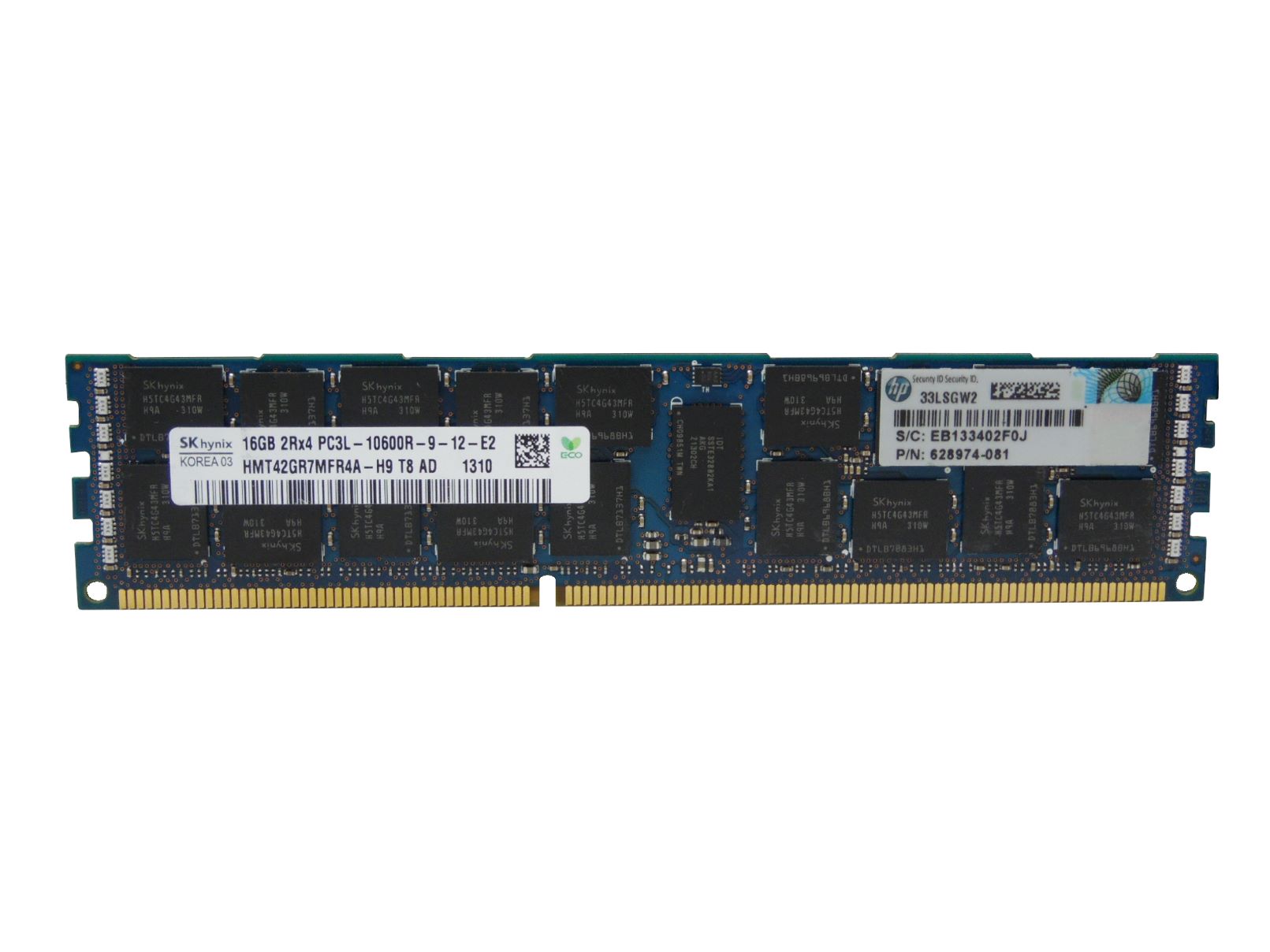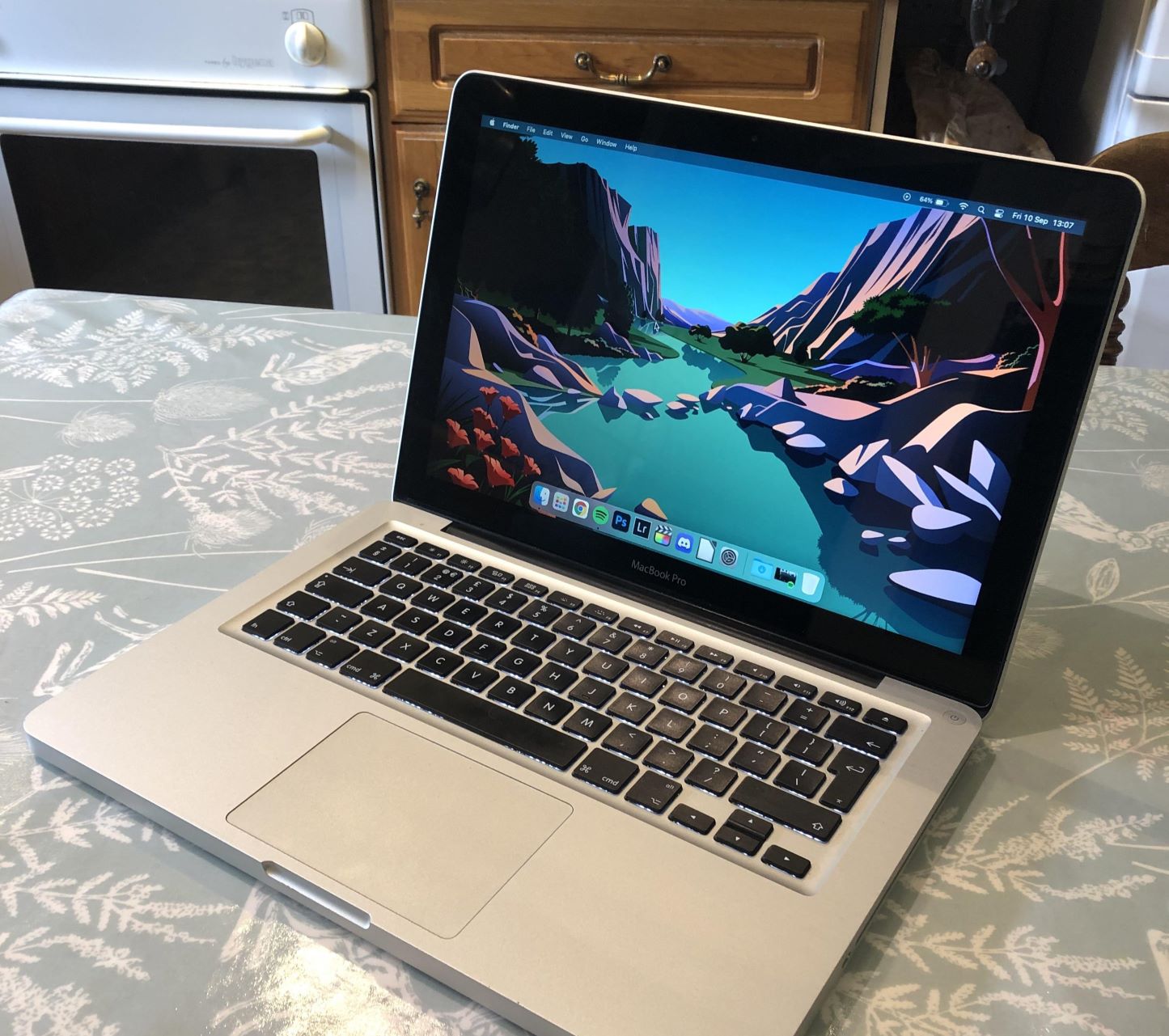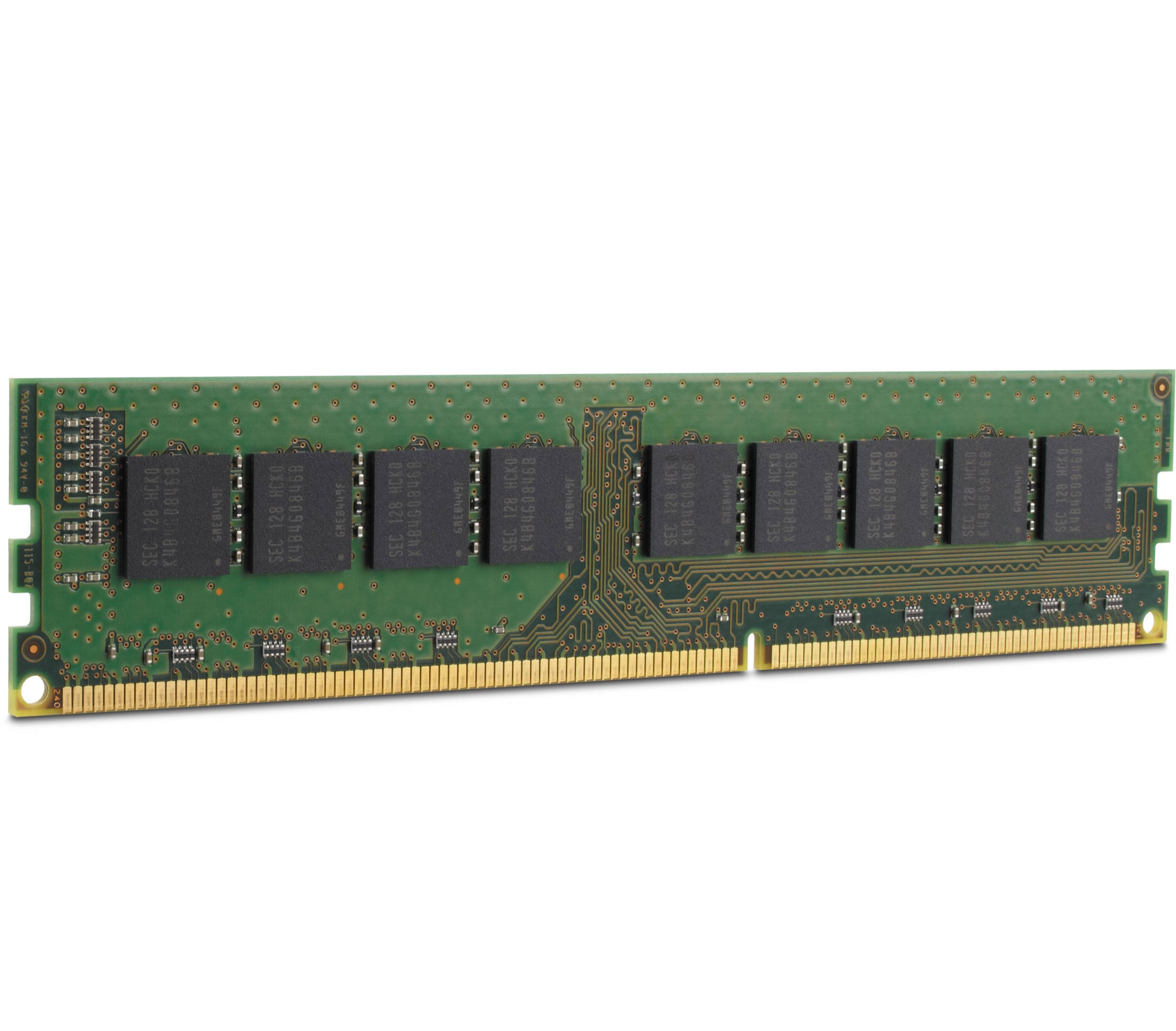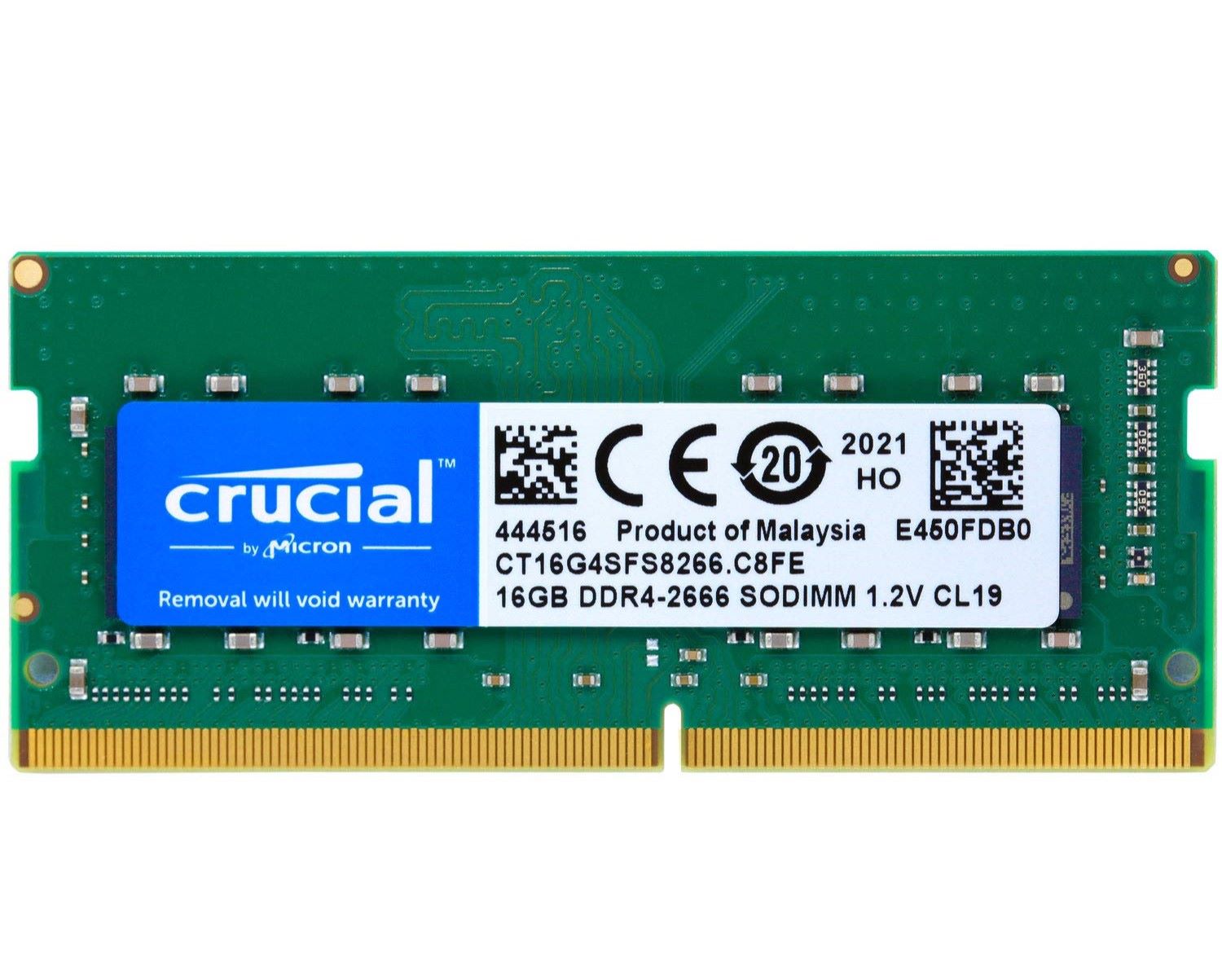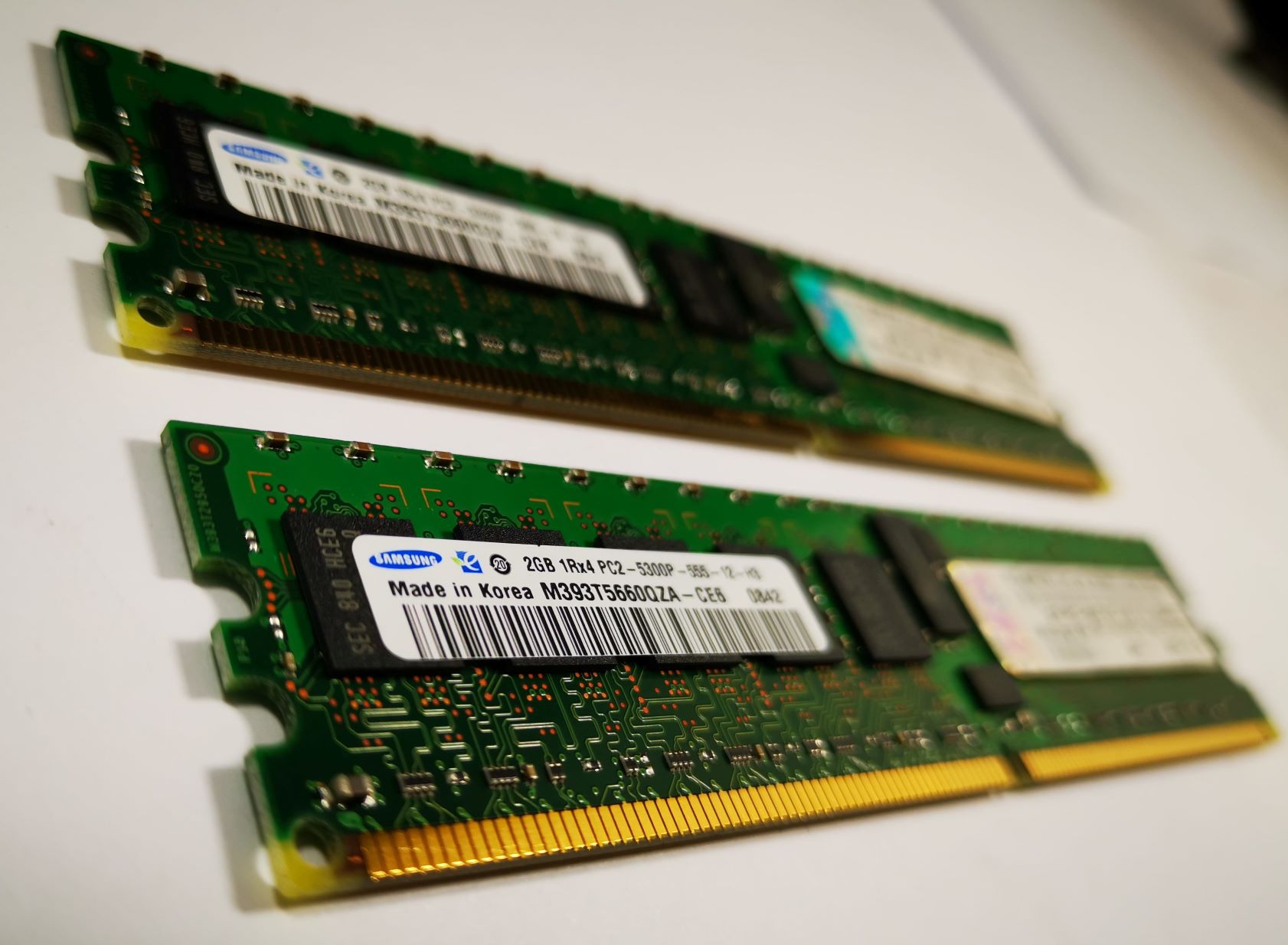Introduction
Welcome to the world of computer memory! If you want to understand your computer’s performance and optimize its speed, it’s crucial to have a good grasp of RAM. But what exactly does GB RAM mean? In this article, we will demystify this technical jargon and provide you with a comprehensive understanding of GB RAM.
RAM, short for Random Access Memory, plays a vital role in the overall performance of your computer. It acts as the temporary storage for data that your computer’s processor can quickly access when performing tasks. As applications and software become more advanced, the demand for RAM has increased, and having an adequate amount of RAM is vital to ensure smooth and efficient operations.
But what does GB RAM mean? It refers to the amount of RAM available in your computer, measured in gigabytes (GB). RAM capacity is an essential specification to consider when purchasing or upgrading your computer. It determines how many programs and tasks your computer can handle simultaneously without slowing down.
In this article, we will dive into the intricacies of RAM, how it works, the different types available, and why it is crucial for your computer’s performance. We will also explore the factors you should consider when choosing RAM and provide guidance on determining the optimal amount of RAM for your specific needs. So, let’s embark on this journey to demystify the world of GB RAM!
Definition of GB RAM
Before we delve deeper into understanding GB RAM, let’s clarify what RAM actually is. RAM, short for Random Access Memory, is a type of computer memory that allows data to be read from and written to by the computer’s processor. Unlike long-term storage devices like hard drives or SSDs, RAM is volatile memory, meaning it loses its data once the computer is powered off.
The term “GB RAM” refers to the capacity of RAM measured in gigabytes (GB). It represents the amount of data that can be held in the RAM at any given time. The more RAM your computer has, the more data it can store and access quickly, leading to smoother multitasking and faster application loading times.
Each task or process running on your computer requires a certain amount of RAM. For example, when you open a web browser, it uses a portion of your available RAM to store temporary data, such as web pages, images, and scripts. The more browser tabs or applications you have open simultaneously, the more RAM is required to accommodate their data.
GB RAM is typically measured in powers of 2, such as 2GB, 4GB, 8GB, 16GB, and so on. As technology advances, higher capacity RAM modules become available, allowing for even larger amounts of RAM in a single computer.
It is important to note that the amount of GB RAM your computer can support depends on various factors, including the motherboard’s maximum supported RAM capacity and the operating system’s limitations. It’s crucial to refer to your computer’s specifications to determine the maximum amount of RAM you can install.
Now that we have a clear understanding of the definition of GB RAM and its significance in computer memory, let’s explore how RAM actually works and why it is so important for your computer’s performance.
How does RAM work?
RAM is an essential component of your computer’s memory hierarchy. It works hand in hand with the processor to ensure efficient data processing. When you launch an application or perform a task, the relevant data and instructions are temporarily stored in RAM to facilitate quick access and retrieval.
RAM is divided into tiny electronic cells, each capable of storing a binary value (either a 0 or a 1). These cells are organized into rows and columns, forming a grid-like structure. The intersection of a row and column, known as a memory cell, represents the smallest unit of data that can be accessed in RAM. Each memory cell has an address, which allows the processor to locate and retrieve the data stored within it.
When you open a program or initiate a task, the processor sends a request to RAM for the necessary data. The RAM then locates the specific memory cells containing the required information and sends it back to the processor through the memory bus. This rapid data transfer allows the processor to access and manipulate the data quickly, resulting in smooth and responsive computing experiences.
RAM operates at a much faster speed than traditional storage devices like hard drives or SSDs. This speed is crucial for achieving optimal performance, as it enables the processor to access the data it needs without experiencing significant delays. However, it’s important to note that the data stored in RAM is only temporary and is lost when the computer is powered off or restarted.
Another vital aspect of RAM is its ability to multitask. RAM allows the processor to store and switch between multiple applications and tasks simultaneously. By keeping data from different programs readily available in RAM, it eliminates the need for the processor to constantly fetch data from slower storage devices, resulting in improved efficiency and responsiveness.
The size of the RAM modules and the number of modules installed in your computer ultimately determine the total capacity of RAM. The larger the capacity, the more data your computer can store and access quickly, enabling it to handle more demanding applications and tasks efficiently.
In the next section, we will explore the different types of RAM available in the market and their characteristics to help you make informed decisions while choosing the right RAM for your needs.
Types of RAM
When it comes to choosing the right RAM for your computer, it’s essential to understand the different types available and their unique characteristics. Over the years, several types of RAM have been developed, each offering varying speeds, capacities, and compatibility. Let’s explore some of the most common types:
- DDR4: DDR4, or Double Data Rate 4, is the latest and most common type of RAM used in modern computers. It offers faster data transfer rates and higher capacities compared to its predecessor, DDR3. DDR4 RAM modules are widely available and provide excellent performance for most applications.
- DDR3: DDR3, or Double Data Rate 3, was the standard RAM type used in computers for many years before DDR4 became dominant. While DDR3 is slower and has lower capacities compared to DDR4, it is still widely used and suitable for older computer systems that do not support DDR4.
- DDR2: DDR2, or Double Data Rate 2, was once the standard RAM type but has now been largely replaced by DDR3 and DDR4. It offers slower speeds and lower capacities compared to the newer generations of RAM. DDR2 RAM is mainly found in older computers and is less common in modern systems.
- DDR: DDR, or Double Data Rate, was the first generation of DDR RAM. It is significantly slower and has lower capacities compared to DDR2, DDR3, and DDR4. DDR RAM is now considered outdated and rarely used in modern computer systems.
In addition to the different types of DDR RAM, there are also variations within each type, such as low-voltage DDR4 (DDR4L) and ECC (Error-Correcting Code) RAM. Low-voltage DDR4 RAM operates at lower voltages, reducing power consumption and heat generation. ECC RAM includes additional error-checking capabilities to ensure data integrity, making it more suitable for critical systems that require high levels of reliability.
It’s important to note that the type of RAM your computer supports depends on the motherboard’s specifications. Always refer to your motherboard’s documentation to determine the compatible RAM type and maximum capacity it can accommodate.
By understanding the different types of RAM and their characteristics, you can make informed decisions when upgrading or purchasing RAM for your computer. In the next section, we will explore the importance of having an adequate amount of RAM and how it impacts your computer’s performance.
Importance of RAM
RAM plays a crucial role in the overall performance and responsiveness of your computer. It is a vital component that determines how effectively your computer can handle various tasks and applications. Let’s explore the importance of having an adequate amount of RAM:
1. System Performance: RAM directly affects your computer’s overall performance. With sufficient RAM, your computer can store and access data quickly, resulting in faster application loading times, smoother multitasking, and a more responsive computing experience. Insufficient RAM can cause delays, lag, and slowdowns, especially when running memory-intensive applications or multitasking with multiple programs.
2. Multitasking: RAM enables your computer to handle multiple tasks simultaneously. The more RAM you have, the more programs and applications you can run without experiencing performance issues. This allows you to multitask efficiently, switching between tasks seamlessly and without delays.
3. Gaming Performance: RAM is crucial for gaming enthusiasts. Many modern games require significant amounts of RAM to run smoothly and handle complex graphics and textures. Insufficient RAM may result in low frame rates, stuttering, and overall poor gaming performance. Having sufficient RAM ensures a smoother and more immersive gaming experience.
4. Media Editing and Rendering: If you work with media editing software, such as video editing or graphic design tools, having ample RAM is essential. These applications often require large amounts of memory to process and render projects efficiently. Insufficient RAM can lead to extended rendering times and sluggish performance.
5. Virtual Machines: If you frequently use virtual machines to run multiple operating systems simultaneously, having sufficient RAM is crucial. Each virtual machine requires a portion of your computer’s RAM to operate efficiently. Insufficient RAM can lead to performance issues, slow response times, and decreased overall efficiency when running virtual machines.
In summary, having an adequate amount of RAM is vital for optimal computer performance, smooth multitasking, gaming, media editing, and running virtual machines. It allows your computer to store and access data quickly, providing a seamless computing experience. In the next section, we will discuss the factors you should consider when choosing RAM for your computer.
Factors to consider when choosing RAM
When it comes to choosing the right RAM for your computer, several factors need to be taken into consideration. Understanding these factors will help you make an informed decision based on your specific needs and budget. Let’s explore the key factors to consider:
1. Compatibility: Ensure that the RAM you choose is compatible with your computer’s motherboard. Check the motherboard’s specifications to determine the supported RAM type, speed, and maximum capacity. Choosing RAM that is not compatible may result in it not being recognized or functioning properly.
2. Capacity: Consider the amount of RAM you need based on your computer usage. If you mainly use your computer for basic tasks like web browsing and word processing, 8GB to 16GB of RAM should be sufficient. For more demanding tasks like gaming, media editing, or running virtual machines, consider 16GB or more for optimal performance.
3. Speed: RAM speed, measured in MHz (megahertz), refers to the rate at which data can be transferred. Higher RAM speeds can provide a slight performance boost, especially in memory-intensive applications. However, it’s important to ensure that the RAM speed is supported by your motherboard and processor, as mismatched speeds may result in lower performance.
4. Latency: RAM latency, also known as CAS latency, measures the delay between the processor requesting data from RAM and the RAM responding. Lower latency values indicate faster response times. While RAM speed is more critical than latency for most applications, lower latency values can have a small impact on performance in certain situations.
5. Budget: Consider your budget when choosing RAM. Higher capacity, faster speed, and lower latency RAM typically come at a higher cost. Determine your requirements and allocate your budget accordingly to strike a balance between performance and affordability.
6. Future Upgradability: Anticipate your future needs when selecting RAM. Consider whether you may need to expand your RAM in the future and ensure that your motherboard has additional RAM slots available for upgrades. Choosing a motherboard with a higher maximum supported RAM capacity can provide flexibility for future upgrades.
7. Brand and Warranty: Opt for reputable RAM brands known for their reliability and quality. Check for warranties provided by the manufacturer to ensure that you are protected in case of any defects or issues with the RAM modules.
By considering these factors, you can make an informed decision and choose the right RAM that meets your specific requirements. In the next section, we will discuss how to determine the optimal amount of RAM you need for your computer.
How much RAM do you need?
Determining the optimal amount of RAM for your computer depends on several factors, including the type of tasks you perform and the specific software you use. While the required amount can vary from person to person, there are some general recommendations to consider:
1. Basic Usage: If you primarily use your computer for everyday tasks like web browsing, email, and word processing, 8GB to 16GB of RAM should be sufficient. This amount will allow you to run multiple applications simultaneously without experiencing significant performance issues.
2. Gaming: For gaming, the amount of RAM needed will vary depending on the games you play. Most modern games recommend at least 8GB of RAM, but for a smoother gaming experience, especially with graphically intensive games, 16GB or more is ideal. This provides ample memory for the game files, textures, and other data to be loaded and accessed quickly.
3. Media Editing and Rendering: If you work with media editing software like video editing or 3D rendering applications, consider 16GB or more of RAM. These applications require large amounts of memory to handle the processing and rendering of high-resolution files and complex projects. More RAM will help reduce rendering times and ensure smooth performance.
4. Virtualization: If you frequently use virtual machines to run multiple operating systems simultaneously, you will need additional RAM. Each virtual machine requires a portion of your computer’s memory to operate efficiently. Consider 16GB or more of RAM to ensure smooth performance when running virtual machines.
5. Future Proofing: It’s always a good idea to consider future needs when determining the amount of RAM. As software becomes more demanding and resource-intensive, consider opting for 16GB or more if your budget allows. This will provide ample headroom for future software updates and ensure your computer remains capable of handling upcoming applications and tasks.
Remember, RAM is easily upgradable, and it’s possible to add more RAM to your computer later if needed. So, if you’re unsure about the amount of RAM you need, starting with 8GB and adding more in the future is a viable option.
Ultimately, your RAM requirements will depend on your specific usage, software requirements, and budget. Assess your needs and consider the recommendations provided to determine the optimal amount of RAM for your computer.
Upgrading RAM
If you feel that your computer’s performance could benefit from additional RAM, upgrading the RAM modules is a relatively straightforward process. Here are the steps to upgrade your RAM:
- Check compatibility: Before purchasing new RAM modules, ensure that they are compatible with your motherboard. Refer to your motherboard’s specifications to determine the supported RAM type, speed, and maximum capacity.
- Determine the required capacity: Assess your needs and determine how much additional RAM you require. Consider the factors discussed earlier, such as the type of tasks you perform and the specific software you use.
- Purchase the RAM modules: Once you have determined the required capacity and compatibility, purchase the appropriate RAM modules from a reputable manufacturer or retailer. Consider factors such as capacity, speed, latency, and your budget.
- Power off your computer: Before installing the new RAM modules, make sure to power off your computer and unplug it from the power source. This ensures your safety and prevents any potential damage to the components.
- Open your computer’s case: Use a screwdriver to open your computer’s case, exposing the internal components. Take note of any specific instructions or precautions mentioned in your computer’s documentation.
- Locate the RAM slots: Identify the RAM slots on your motherboard. These slots are typically long, narrow, and aligned parallel to each other. Gently push down on the tabs on each end of the RAM slot to release the old RAM modules.
- Remove the old RAM modules: Carefully remove the old RAM modules from the slots. Handle them by their edges, avoiding touching the gold contacts to prevent any static discharge or damage.
- Install the new RAM modules: Insert the new RAM modules into the empty RAM slots, aligning the notches on the module with the tabs in the slot. Press down firmly until the module clicks into place. Ensure that it is securely installed.
- Close the computer case: Once the new RAM modules are installed, close your computer’s case and secure it with the screws. Ensure that everything is properly aligned and tightened.
- Power on your computer: Plug your computer back into the power source and power it on. The computer should recognize and configure the new RAM automatically. You can verify the new RAM capacity by checking the system information in your operating system.
Upgrading your RAM can significantly improve your computer’s performance, allowing for smoother multitasking, faster application loading times, and better overall responsiveness. However, it’s important to note that increasing the RAM alone may not always solve performance issues caused by other hardware or software limitations.
If you are unfamiliar or uncomfortable with upgrading your computer’s RAM by yourself, it is recommended to seek assistance from a professional or consult the manufacturer’s support. They can guide you through the process or perform the upgrade for you.
Now that you are equipped with the knowledge of upgrading your computer’s RAM, you can consider this option to enhance your computer’s performance based on your specific needs.
Conclusion
Understanding the concept of GB RAM and its significance in modern computing is crucial for optimizing your computer’s performance. In this article, we have explored the definition of GB RAM, how RAM works, the different types of RAM available, and the importance of having an adequate amount of RAM.
We have also discussed various factors to consider when choosing RAM, such as compatibility, capacity, speed, latency, budget, and future upgradability. By taking these factors into account, you can make an informed decision when selecting the right RAM for your computer.
Additionally, we provided guidance on how to determine the optimal amount of RAM you need based on your specific usage and requirements. This ensures that your computer has enough memory to handle tasks, applications, and software efficiently.
If you find that your computer’s performance could benefit from additional RAM, we have also outlined the steps involved in upgrading your RAM. It is a relatively straightforward process that can significantly improve your computer’s overall performance, responsiveness, and multitasking capabilities.
Remember, while RAM is a critical component, it is not the sole determining factor for your computer’s performance. Other factors like the processor, storage devices, graphics card, and software optimization also play vital roles in delivering optimal performance.
By equipping yourself with the knowledge about GB RAM and its role in computer memory, you can make informed decisions when it comes to upgrading or purchasing RAM for your computer. This will help you achieve a seamless and efficient computing experience tailored to your needs.
So, continue to explore the world of GB RAM, stay informed about technology advancements, and make the most out of your computer’s performance with the right amount of RAM.







